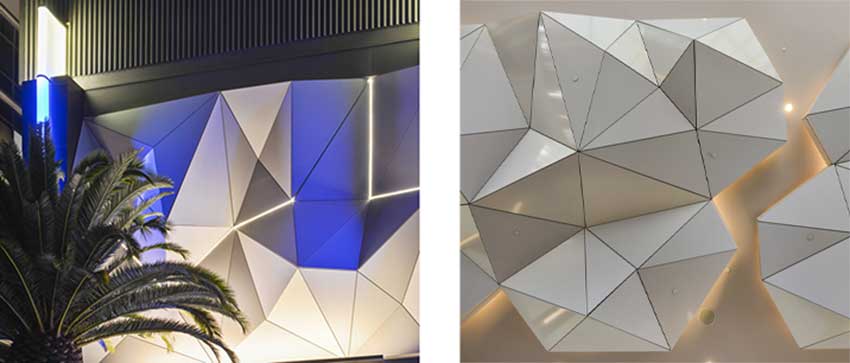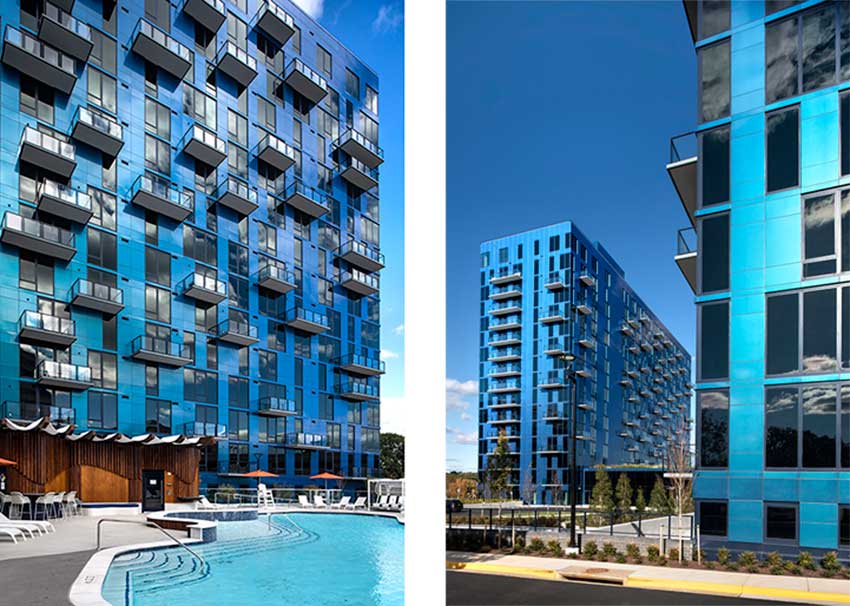Aesthetics in Designing With Metal Composite Material (MCM)
 1 AIA LU/HSW; 1 IDCEC CEU; 0.1 ICC CEU; 1 IIBEC CEH; 0.1 IACET CEU*; 1 AIBD P-CE; AAA 1 Structured Learning Hour; This course can be self-reported to the AANB, as per their CE Guidelines; AAPEI 1 Structured Learning Hour; This course can be self-reported to the AIBC, as per their CE Guidelines.; MAA 1 Structured Learning Hour; This course can be self-reported to the NLAA.; This course can be self-reported to the NSAA; NWTAA 1 Structured Learning Hour; OAA 1 Learning Hour; SAA 1 Hour of Core Learning
1 AIA LU/HSW; 1 IDCEC CEU; 0.1 ICC CEU; 1 IIBEC CEH; 0.1 IACET CEU*; 1 AIBD P-CE; AAA 1 Structured Learning Hour; This course can be self-reported to the AANB, as per their CE Guidelines; AAPEI 1 Structured Learning Hour; This course can be self-reported to the AIBC, as per their CE Guidelines.; MAA 1 Structured Learning Hour; This course can be self-reported to the NLAA.; This course can be self-reported to the NSAA; NWTAA 1 Structured Learning Hour; OAA 1 Learning Hour; SAA 1 Hour of Core Learning
Learning Objectives:
- Describe the aesthetic design capabilities MCMs offer including the material’s ability to stay absolutely flat or bent, shaped, curved, textured, perforated, and patterned in many colors and finishes.
- Explain the sustainable and fire protection capabilities offered by MCMs.
- Identify ways in which MCMs are high suitable for branding designs.
- Discuss recent case studies where the unique design capabilities of MCMs are showcased.
This course is part of the Metal Architecture Academy
Gluing Panels: can be glued using special adhesives and double-sided adhesive tape suited for composite panel systems.
Finishes and Paints: Enhancing aesthetics, MCMs come in a wide variety of attractive finishes. This includes two-coat solids, two-coat micas, three-coat metallics, three-coat prismatics with color shifting capabilities, mirror 3D-looking printed patterns, matte, and anodized finishes.

Photos courtesy of © Lunghi Media
Guests are treated to an origami-like sculptural facade for the porte-cochère made from colored MCM panels at this LAX hotel. The nearly 300-foot-long, 14,950-square-foot 3D cladding spans the entire length of the hotel
For example, special effects can create a shimmering pearlescent look while prismatic finishes can change appearance depending on the time of day and angle viewed. Printed patterns can also be applied to replicate the look of other natural materials such as stone, travertine, marble, or many different wood species.
In applying paint, a popular choice for MCMs is coil-coated polyvinylidene fluoride (PVDF). The coating lends a high level of durability and resistance against weathering, chalking, fading, and ultraviolet rays.
Because of its low melting point, high dielectric, and mechanical strength, PVDF paint offers the following advantages:
- Excellent resistance characteristics to acids, solvents, and bases
- Proven protection against abrasion and wear
- Impedes chipping and peeling
- Battles environmental stresses for acid rain and ultraviolet attack
- Exceptional color consistency and fade resistance
- Highly inert and stable, providing excellent resistance from metal weathering over time
- Meets the high standards of the AAMA 2605 performance requirements.
MCMs can be finished with two-coat solid colors, two-coat mica, three-coat metallic, high-gloss up to 80% gloss, and low-gloss 15-20% matte finishes, standard glosses with a 30% gloss factor, and hybrid finishes consisting of a PVDF color coat and FEVE clear coat.

Photos courtesy of 3A Composites USA
MCMs in a color-shifting finish decorate the Exo, a 457-unit multifamily facility in Reston, Va.
Carbon Footprint
In addition to the aesthetic and design capabilities proffered by MCMs, one area where metal really shines is in the arena of sustainability.
Due to the fabricated nature of MCM production, metal members are precisely engineered and created to each project’s customized specifications. This means that the use of metal is fully optimized during fabrication and construction process and very little, if any, material is wasted.
And because there are many production facilities in different regions around the country, building owners and architects have the opportunity to regionally source their metal fabricated panels.
To investigate metal’s sustainability factors the Metal Construction Association commissioned environmental consultant thinkstep to perform a study entitled, “Life-Cycle Assessment of Metal Construction Association Production Processes, Metal Roof and Wall Panel Products.”
As reported in a MCA Architectural Record CEU “The ABCs of LCAs and EPDs,” Trisha Montalbo, senior consultant with thinkstep in Boston, stated that a high level of recyclability is one of metal’s strongest environmental attributes. “Additionally, with respect to carbon footprint and demand for nonrenewable energy resources, most of the metal wall assemblies were preferable to the concrete-based assemblies.”
Another key finding of the study reported that the appropriate treatment of waste material can significantly reduce a product’s environmental profile while the transportation of goods and materials is considered minor within the context of the overall manufacturing process.
Another study was commissioned by the Metal Building Manufacturers Association and performed by Walter P. Moore and Associates found metal buildings to display lower environmental impacts in all six metrics as compared to load-bearing masonry walls, concrete, tilt-up, and steel-framed construction of the same building footprint and functional equivalence. For the types of building where metal buildings are typically most economical, the report concluded that metal generally performs better in life-cycle analyses and produce the least embodied building material impact.
Fire Protection
Another important issue with MCMs is ensuring fire protection, particularly in light of advancements in the National Fire Protection Association NFPA 285-23 Standard Fire Test Method for Evaluation of Fire Propagation Characteristics of Exterior Non-Load-Bearing Wall Assemblies Containing Combustible Components performance requirements for limiting fire propagation in building assemblies contained combustible materials.
Offering a little perspective on the evolution of this important standard, John Valiulis, P.E., technical director of the International Firestop Council stated in a Fire Engineering magazine article, “The fire protection engineering community in the U.S. foresaw the increasing use of combustible components in exterior wall construction decades ago. The test method, which today is titled NFPA 285, has resulted in an existing building stock with exterior walls that have exhibited a resistance to self-propagating fires.”
The main fire-related issue with an MCM system is the panel core sandwiched between the two metal facers. MCM panels have been developed with a thermoplastic core that resists the propagation of flames and these panels are commonly used where compliance with NFPA 285-23 is required by local and national building codes.
MCM panel systems made with fire-retardant FR core perform well when tested to the NFPA 285-23 standard. The FR core is made with fire-retardant compounds that break down to create water vapor when subjected to extreme heat. This water vapor helps suppress flame spread, and causes the material to self-extinguish once the flame source is removed.
The large-scale, two-story test involves a number of detailed requirements limiting the extent of flame spread over the test wall assembly. Consequently, if an exterior assembly using MCM panels meets the performance criteria of this standard, there is a high level of assurance for the fire protection and safety of building occupants.
The most recent version of the NFPA 285-23 contains valuable guidance in the appendix on the level and type of modification that can be considered for a project based on a successfully tested assembly. This evaluation would be made by a registered design professional and allows for the project design flexibility.











